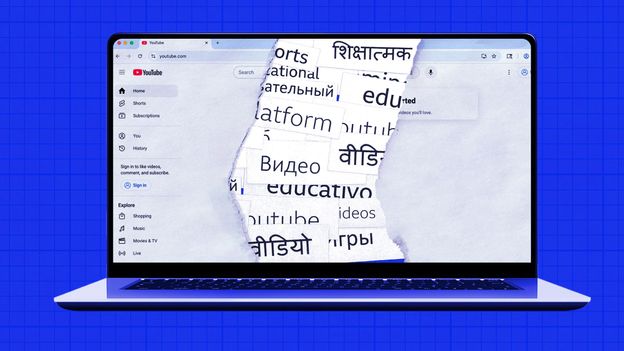Next, we found a telling difference in how people described their own videos. YouTube asks people to categorise their videos. Most users don’t bother to change the default, People & Blogs. But when we excluded that, the differences between languages grew sharper.
You can see this in the last chart below. In Russian, gaming videos dominate. It’s the most popular category in English and Spanish, too. But in Hindi, Entertainment and Education are on top. And for all the attention English-language political content gets in the popular discourse, English has the smallest number of videos in the “News and Politics” category.
These category labels are more than metadata. They’re a look at how different cultures use the platform for different purposes. What we’re seeing is parallel internets shaped by local needs, expectations and norms. But this data suggests something different: people in different linguistic communities aren’t just making different videos and engaging with them differently, they may be using YouTube for completely different reasons.
Finally, we looked at popularity metrics – views, likes and comments – and once again, Hindi YouTube was an outlier. It demonstrated extreme inequality. Just 0.1% of Hindi videos accounted for 79% of views (the other languages ranged from 54% to 59%). But there’s an interesting twist. Those less popular videos were far more likely to have likes.
That suggests something deeper. On Hindi YouTube, even the videos that aren’t being seen are being appreciated and acknowledged. Our new research suggests YouTube in India may often be used like a video messaging service to talk to friends and family, with public videos often intended for a private audience.

